STEP-BY-STEP PROCESS AND MATERIALS
Materials:
|
1. Soil Core
with a diameter of 2.3 cm
2. Plastic bags 3. Work Gloves 4. Sharpie 5. LaMotte STH Chemical testing kit 6. Work goggles 7. Latex or any kind of protective glove 8. Student lab notebook (if you do not have one regular paper can be used) 9. Pen 10. Tree Book 11. Long pants and hiking boots 12. Bug repellant
|
 |
1. Before starting this experiment, take time to pick two different sites with at least one common plant. Also, make sure that the sites chosen have diverse plant life, so the other two plants chosen are fairly different from each other.
2. After deciding which plants to use, label plastic bags under the name of the plant, which site, and if soil or leaves are going to be collected.
3. Gather Soil Cores, gloves, labeled bags, a tree book and bug spray (highly recommended).


4. Walk to first site.
5. When gathering samples, make sure that the soil samples are collected as close to the plant as possible.
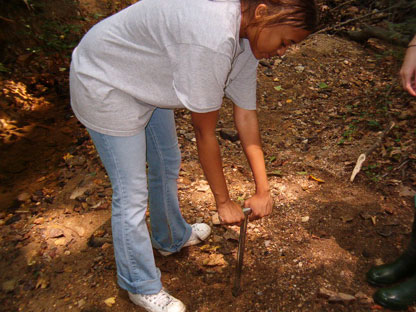

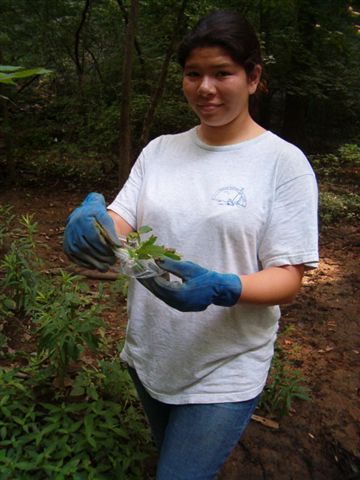
7. Also in the first site, gather the leaf and soil samples of the common plants and repeat step 6.
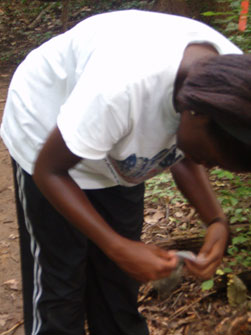
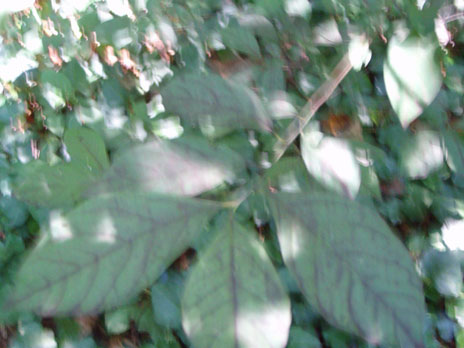
9. Take the samples inside promptly and prepare for chemical testing by putting on Latex/protective gloves and scientific goggles.
Note: Be sure to perform chemical tests on both plant and corresponding soil sample at approximately the same time to receive accurate data.
10. Using the LaMotte SRH Chemical testing kit, follow the Green Plant Tissue Test and then the Aluminum test to find the aluminum level in the plants gathered.

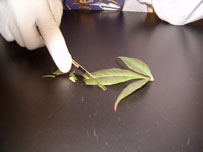
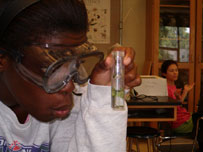

11. Using the LaMotte SRH Chemical testing kit again, follow the Aluminum test to find the aluminum levels in the soil samples.


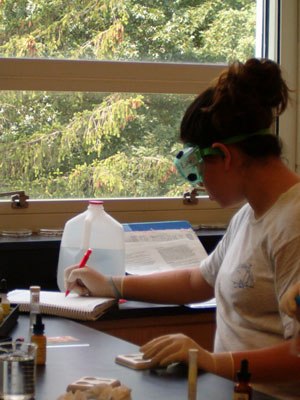
|
Last Updated: July 28th, 2006 Copyright 2006 |